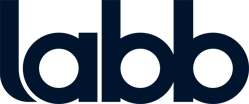Streamlining Appointment Management: A Pega-Powered Solution for de Volksbank
90%
Net Promoter Score for appointments booked
470
hours per adviser, per year saved.
30%
increase in no. of appointments booked.
Background
An advanced and seamlessly integrated appointment system is a minimum requirement for banks and financial service providers. Customers, at the very least, anticipate the ability to schedule appointments conveniently through a web-based service or various omnichannel messaging platforms. Given the limited differentiation perceived by customers among Financial Service Providers (FSPs), the adoption of efficient management tools becomes crucial for both customer retention and acquisition. This case study delves into the appointments application developed specifically for de Volksbank, aiming to integrate and optimize their appointment-taking capabilities.
De Volksbank, a prominent financial services provider in the Netherlands, operates as a multibrand bank with a substantial customer base spread across four brands. In order to facilitate the sale of various products such as mortgages, loans, and insurance, customers often need to schedule appointments with advisors. Traditionally, this process involved calling the bank and coordinating availability between customers and advisors.
The Challenge
The objective was to develop a new appointments system that seamlessly integrated with Microsoft Teams and Outlook, providing a fully automated front-end experience. The goal was to enable customers to log into their accounts and effortlessly book appointments with, for instance, a mortgage advisor at the most suitable branch and convenient time. Moreover, the solution aimed to optimize advisor efficiency by addressing the issue of unnecessary travel between multiple branches for each appointment (Location Management).
Our solution
We created an appointments application with built-in location management functionality, maximising advisor efficiency. This feature allowed advisors to specify their location at any given time, ensuring that appointments were scheduled accordingly, thereby saving significant travel time.
Once an advisor specified their location and availability, the system presented this information to potential customers during the booking process. By considering the customer's entered location and identifying the most suitable advisor based on their role and whereabouts, the system facilitated seamless appointment scheduling.
We seamlessly integrated the solution with Microsoft Outlook and Teams, automating the process of sending confirmation emails to both the advisor and customer. Human intervention was only required in cases where post-booking changes were necessary. Additionally, customers could conveniently view and make changes to their appointments through their online banking app or web service.
Integration
Successful integration of both Microsoft Teams and Outlook enabling an automated end to end booking process. Users can select available time slots, send meeting invitations, and receive automatic confirmations, all within their preferred Microsoft applications. This reduces manual effort, minimizes errors, and saves time for both the users and the service providers.
Location Management
The system can use the data gathered from user preferences or advisor recommendations to tailor booking options based on the user's desired location or geographic preferences.
Advisor Efficiency
The legacy system allocated a fixed 30-minute window in addition to the appointment itself, accounting for travel time and note-taking after meetings. However, with the implementation of location management services, this allocated time became unnecessary. As a result, advisors were able to save 2 hours per day, previously spent on non-essential activities, allowing them to focus more effectively on their core responsibilities.
Customer Satisfaction
The Net Promoter Score (NPS) for appointments booked experienced a significant improvement, increasing from 72% to 90%. This rise in customer satisfaction indicates a higher likelihood of repeat business and referrals, highlighting the positive impact of enhanced customer experiences on business outcomes.

